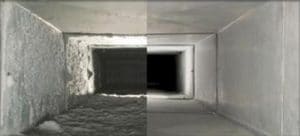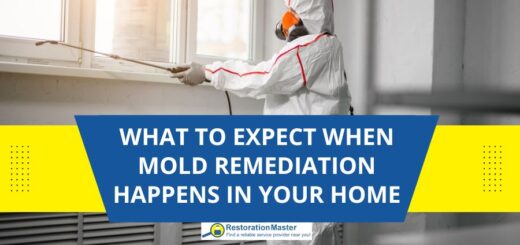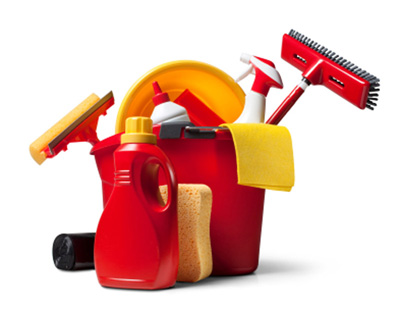6 Essential Renovations to Keep Your Older Home Functioning and Safe
Older homes have many redeeming qualities. Many seem to have taken on personalities of their own over the years. Unfortunately, older homes are constructed in ways that leave a lot to be desired as far as safety and comfort are concerned. If you have an older home and plan to do some renovations to improve those features, these six ideas offer an excellent place to start.
1. Update Wiring and Electrical
Not everything in older homes will meet current standards and building codes. That extends into the wiring and electrical systems. After all, there is a good possibility that there was no electrical service when your house was originally constructed. If you are doing a major renovation, it makes sense to run new wiring throughout the home. Look beyond basic wiring and examine all appliances, receptacles, and electrical fixtures. It will improve the home’s safety factor by reducing fire hazards and giving you peace of mind.
While you are performing this major undertaking, it might be a good time to invest in alternative energy sources. With rebates and incentives, you may be able to offset any initial solar panel cost with lower utility bills over time. This is especially true if the house is in an area with high utility costs.
2. Evaluate and Install HVAC Systems
Depending on the structure’s age and how many renovations have been done over the years, you may be
looking at several different heating and cooling scenarios. Some older or historic homes may not have central HVAC systems, with individual fireplaces and stoves serving as the primary heat source. More likely, however, you will encounter a retrofitted HVAC system. If fuel oil was used, find the old tank and make sure it is still intact with no leaks.

In some cases, inefficient furnaces and stoves may have left sootSoot is fine black particles composed of carbon and other ma... More and residueResidue is any leftover material, such as soot, dust, or che... More on interior walls. This should be addressed before any new systems are hooked in. Have all vents and ductwork thoroughly inspected for potential irritants or contaminationContamination is the presence of harmful or unwanted substan... More. A professional air duct cleaning may be sufficient, or you may need to invest in new ducts to ensure a safe environment.
3. Assess Foundations and Structural Integrity
Older homes may have been added on to over time, so you don’t know what you will find when you start opening up walls. It is important to know some of the more common signs of major problems so you can spot them early in the process. However, even armed with that knowledge, you should hire a structural engineer to inspect the foundation and identify any weight-bearing walls before you start a construction project.
4. Inspect Plumbing and Waste Lines
This harkens back to the electrical situation. If you look at the history of housing in the United States, only a tiny percentage of houses had indoor plumbing in the early twentieth century. That means the systems in place may be sorely outdated. A few signs that your plumbing needs to be modernized include:
- Poor water pressure
- Rattling noises when water is turned on and off
- Supply pipes made of leadLead is a heavy metal that can be toxic to humans, especiall... More
- Copper pipes that are joined with a lead-based solder
It isn’t just the supply lines and pipes that could be problematic. If the house is not connected to the public sewer system, you will want to find out how wastewaterWastewater is used water that contains contaminants, chemica... More was handled when your home was last updated. Is there a septic system to handle it, or does it merely go out to an undisclosed location in the yard? This may be more common than you think in rural areas, so it’s worth investigating. Have any systems inspected and work to bring them up to current building codes.
5. Undertake Lead Remediation
LeadLead is a heavy metal that can be toxic to humans, especiall... More was used in a host of building applications through the first half of the twentieth century. Unfortunately, experts now know that it can contribute to some serious health conditions. The Environmental Protection Agency offers several tips to protect your family from leadLead is a heavy metal that can be toxic to humans, especiall... More contaminationContamination is the presence of harmful or unwanted substan... More. Among those is a recommendation to have a professional leadLead is a heavy metal that can be toxic to humans, especiall... More assessment done if you plan to do any renovations in an older home. Construction can easily create or disturb leadLead is a heavy metal that can be toxic to humans, especiall... More dust that then becomes an airborne contaminant.
6. Test for Mold or Other Airborne Contaminants
If you’ve ever stepped into an older home that has gone undisturbed for several  years, you know that moldMold is a type of fungus that grows in damp or humid conditi... More and mildewMildew is a type of fungus that grows on damp surfaces, typi... More can be a serious problem. While new construction is designed to be virtually airtight, older houses allowed air (and moisture) to flow freely through cracks and around windows and doors. Pests such as insects and rodents may have moved in and made nests in hidden spaces. Their droppings can release potentially harmful microorganisms into the air, causing respiratory irritation or infectionInfection is the invasion and multiplication of harmful micr... More. You can perform some basic remediation procedures yourself, but if anyone in the house is suffering from respiratory symptoms, you should consider bringing in a professional to tackle the mold remediation.
years, you know that moldMold is a type of fungus that grows in damp or humid conditi... More and mildewMildew is a type of fungus that grows on damp surfaces, typi... More can be a serious problem. While new construction is designed to be virtually airtight, older houses allowed air (and moisture) to flow freely through cracks and around windows and doors. Pests such as insects and rodents may have moved in and made nests in hidden spaces. Their droppings can release potentially harmful microorganisms into the air, causing respiratory irritation or infectionInfection is the invasion and multiplication of harmful micr... More. You can perform some basic remediation procedures yourself, but if anyone in the house is suffering from respiratory symptoms, you should consider bringing in a professional to tackle the mold remediation.
Renovating an older home can be tricky. Knowing which projects tend to be the most pressing can help you prioritize your to-do list.












